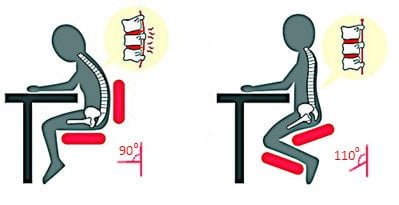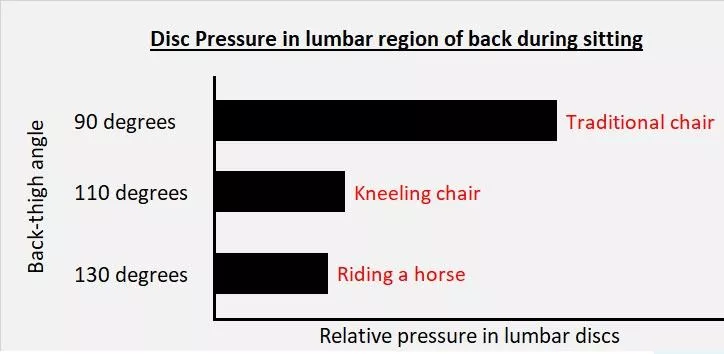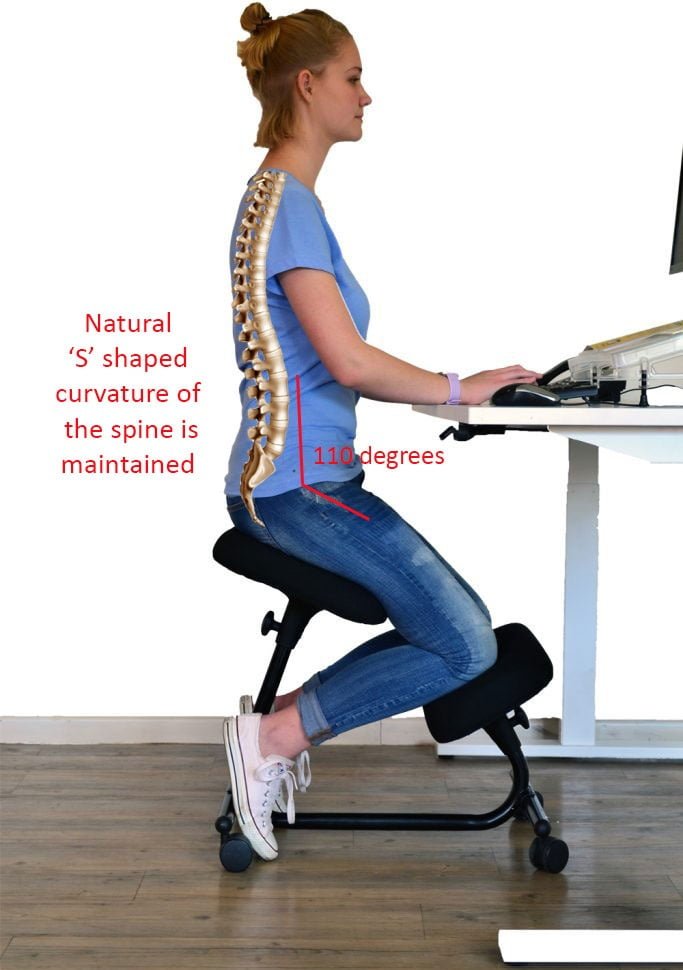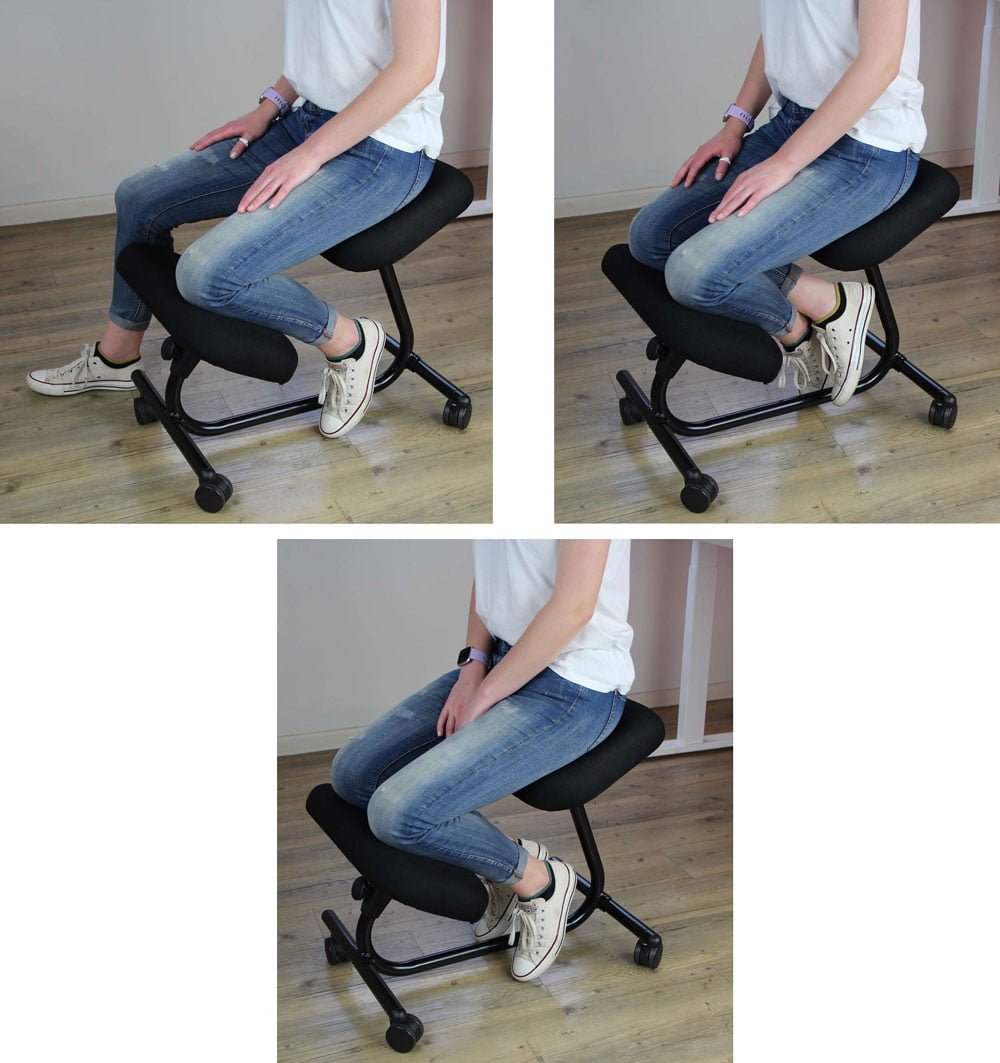

Wellback Kneeling Chair
Wellback is a specialist division of Karo, dedicated to enhancing workplace ergonomics, alleviating back pain, and promoting seated health and wellbeing.
Whether you work from home or in an office, Wellback’s range of products is designed to address specific back-related concerns and offer tailored solutions that meet your needs.
The Wellback Kneeling Chair maintains an ‘open’ pelvis while you are sitting. This reduces the strain in your lower back that occurs when you sit on a conventional chair. An ‘open’ pelvis is when the angle between your spine and thighs is at least 1100.
Wellback Kneeling Chair
R2590 – R2895Price range: R2590 through R2895 incl VATThe Principle of a Kneeling Chair
Originally developed by Peter Opsvik in 1979, the underlying principle of a posture kneeling chair is to maintain an ‘open’ pelvis while you are sitting. This reduces the strain in your lower back that normally occurs when you sit on a conventional chair. An ‘open’ pelvis is when the angle between your spine and thighs is at least 1100.
By opening the pelvis and lowering the knees in relation to the hips to create a 1100 back-thigh angle, the disc pressure in the lumbar region of the spine is reduced by up to 65% when compared to sitting in the traditional 900 back-thigh angle position. Is a kneeling chair a suitable chair for me?
The name “kneeling chair” can be a little misleading as it leads you to believe that your knees are taking the bulk of your weight and replacing the function of your buttocks. This certainly isn’t the case with the Wellback Kneeling Chair.
With the Wellback Chair, your buttocks carry about 80% of your body weight. The knee pad supports the remaining 20% of your weight and also prevents you from sliding off the inclined seat.


Benefits of Kneeling Chairs - the PROS
- Kneeling chairs create a 110 degree back/thigh angle as compared to the 90 degree back/thigh angle with a traditional chair. This helps maintain the natural elongated 'S' shape of the spine which dramatically reduces the pressure in the lumbar discs when you sit.
- Kneelers reduce lower back pain.
- Opening the pelvis reduces the compression of the internal organs and abdominal muscles. This allows for easier breathing and better digestion.
- With no backrest to support you, your core and back muscles are more engaged which strengthens your core.
- Because your core muscles are more engaged, your blood circulates better, carrying nutrients and oxygen to the brain and the body, so that you feel more energised.
- Improved blood flow to the brain leads to better concentration.
- Poor posture eventually leads to fatigue, discomfort and loss of productivity. By keeping the spine properly aligned, comfort and concentration are greatly increased.

Limitations of a Kneeling office chair – the CONS
- Kneeling chairs address posture issues only for the lower part of the back. Get professional advice if you have upper back problems or you are unsure whether a kneeling chair is suitable for you.
- The geometry of a kneeling chair results in a higher sitting position when compared to sitting on a conventional chair. This might require that your working surface height needs to be increased. Failing to do this may result in you leaning forwards when you work, negating all the posture benefits that a kneeling chair offers.
- The pressure on shins supported on the kneepad can cause some discomfort during the initial use of a posture chair.
- A kneeler may restrict circulation to your legs. If you suffer from circulation problems, get professional advice before purchasing a kneeling chair. To prevent circulation restriction in your legs, you should initially limit the time you spend on the kneeling chair. Alternate between chairs.
What is the best way to sit on a kneeling chair?
With a posture chair, there is no single correct sitting position.
As Opsvik stressed, it is important to vary your seated position on the kneeling chair frequently. Do not continuously sit in the same static position as fatigue and muscular pain will quickly result.
When you initially sit down, first sit on the seat of the kneeling chair before moving into the kneeling position. The bulk of your weight (roughly 80%), should be supported by your buttocks, and the remainder (roughly 20%), is supported by the shins.
A kneeling chair can play a crucial role in aligning your spine, back, neck, and shoulders. Improve your posture and reap the benefits of enhanced digestion, better breathing, and a stronger core!






